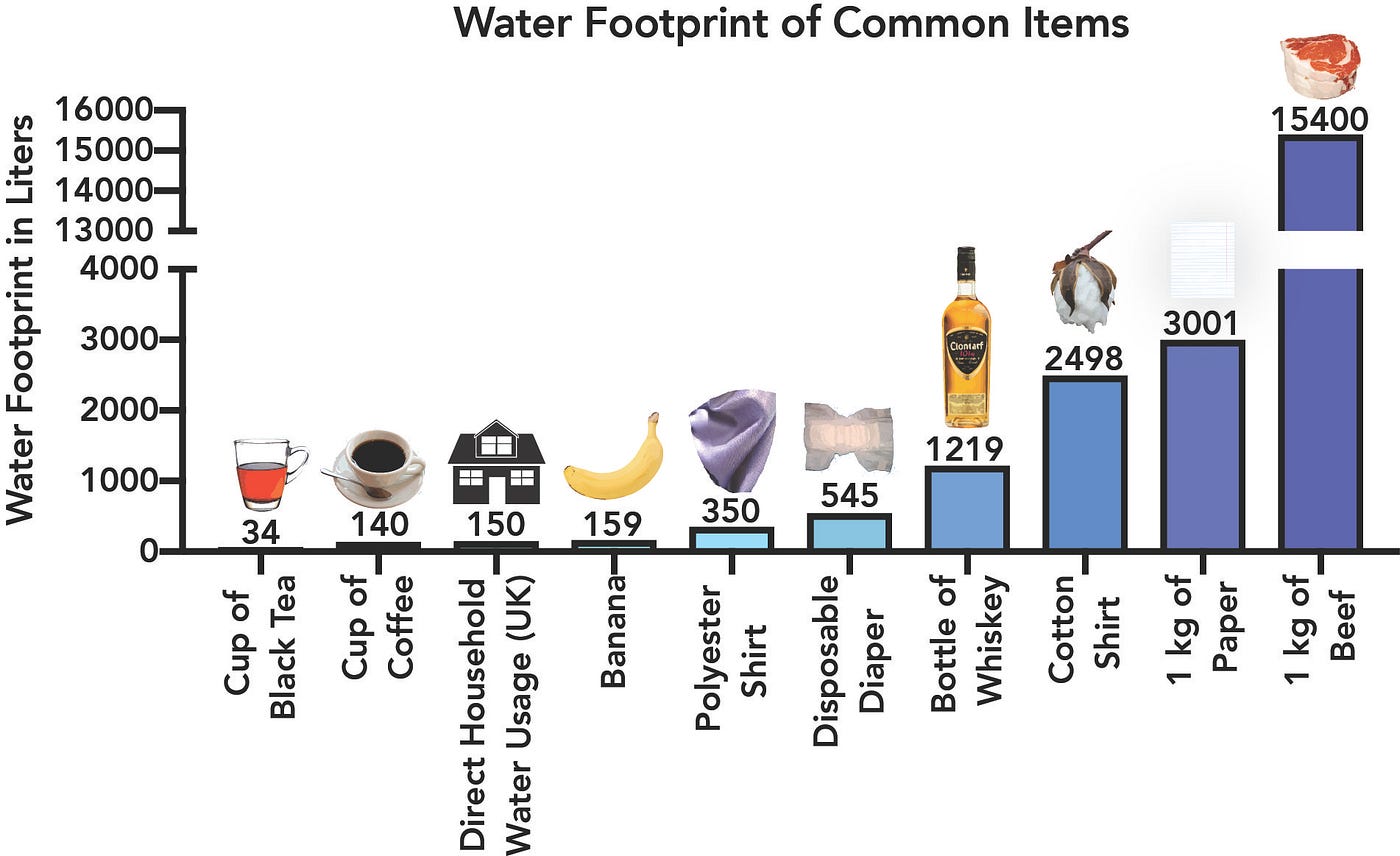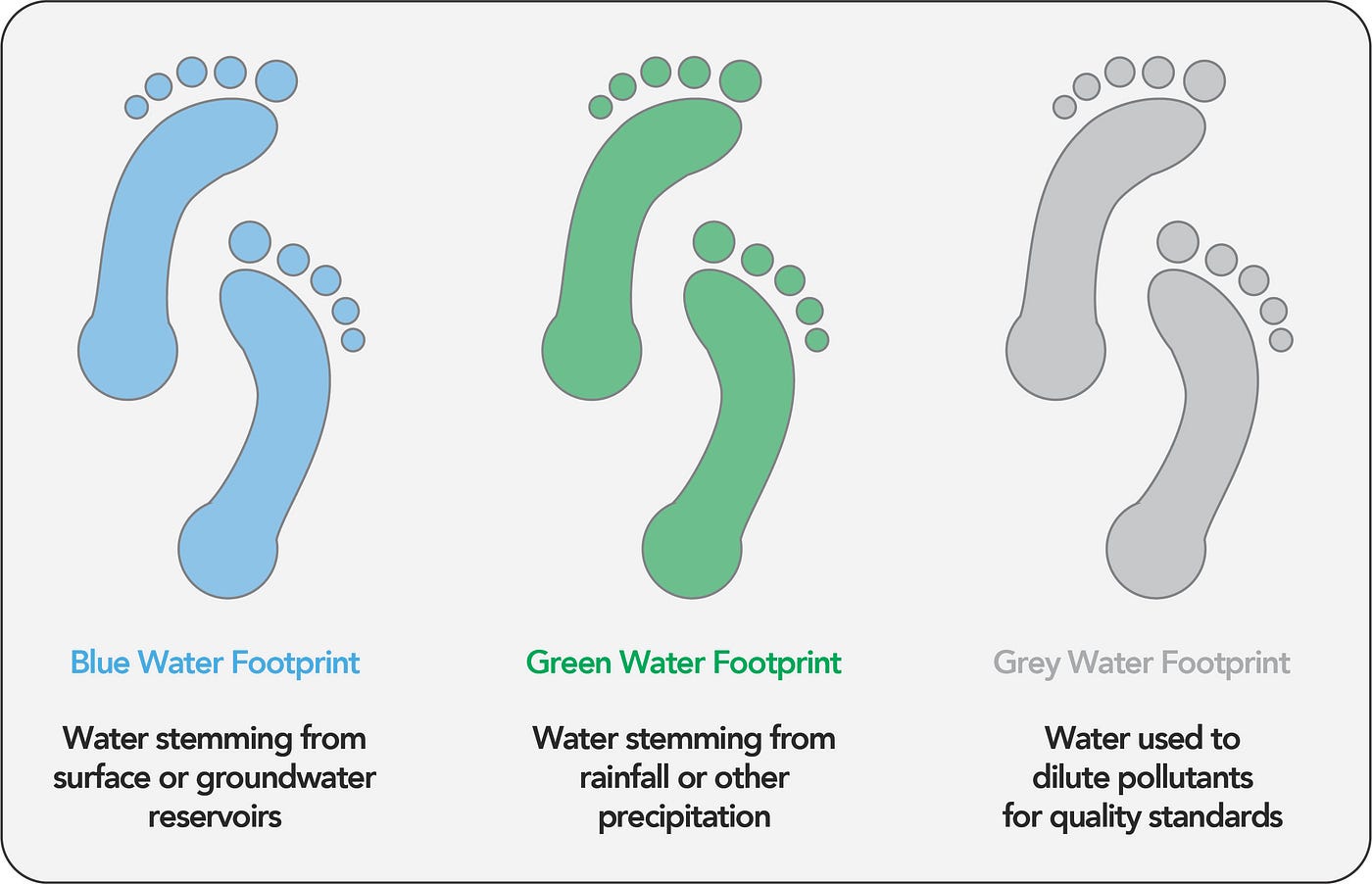Average Two Person Family Water Usage Gallons Around World Yearly
Muddying the Waters: Your Water Usage Doesn't Happen Where You Call up it Does
Bear witness-Based Policy is Bigger than You or Your Feelings — Part 4
![]()
Did you ever spend a significant corporeality of idea on h2o? Not necessarily drinking it only using i t . Just like with everything else we possess in abundance, nosotros usually don't think about water. And however it'southward ubiquitous and essential in our lives. We literally need information technology to live, we need information technology for other bones sanitary needs and of form we need it for cooking & washing. Yet on the other paw we are acutely enlightened of droughts and water shortages which are even predicted to be among the chief causes for future wars. So a give-and-take seems to be in order about the issue of water usage. Given that we utilise water freely on a daily basis, do we need to reconsider our habits for the sake of the environs? Not to give too much away simply saving water can be considerably advantageous for the environment — even though the places where y'all can relieve h2o may be different from what y'all might expect. And there's even a financial benefit for you lot in saving h2o in some means. But before nosotros go into the payoff, we first demand to have a await at how nosotros actually use water, both direct equally well every bit indirectly.
Direct water usage in households
The average person in an average European land such as the United kingdom of great britain and northern ireland directly uses effectually 150 liters of water per day in their household while the numbers are significantly higher for countries such as Australia or the United states. This may non sound like much but in Europe household h2o usage accounted for 18% of total h2o usage. It'south particularly noteworthy if you consider that 150 liters is about iii times equally much as is estimated to exist required for basic human needs. The relative proportions on what people spend this water on in their household vary but roughly a quarter is taken up past showers, toilet flushes and kitchen stuff, respectively. Other items for example include washing clothes & irrigation. Contrast this with poor countries such as Rwanda or Haiti, where people only have 2 to 15 liters of water per person per day at their disposal. Not fifty-fifty a tenth of our daily water consumption!
At that place are a couple of trends to unpack here regarding water usage. First and quite obvious: the richer a country, the higher the daily h2o usage per person on average. You can clearly observe this in the increasing h2o consumption after World War II. All these fancy water-using appliances from the humble flushing toilet to dishwashers and swimming pools are expensive by global standards. Another appreciable tendency is that water usage per person decreases with the size of the household (all else being equal). Contrast a single private washing their three shirts and i pair of jeans in a one-half-empty washing automobile with a family properly loading up their washing auto and y'all tin easily run into why this is the instance. A lot of our water usage scales quite well (though of course items such as toilet utilize don't scale meliorate in households than for single persons). The last trend in directly water usage is technology. Fortunately, technology progresses and and so do our household appliances. In full general, this leads to more efficient versions of dishwashers, toilets, etc. which utilise less water (peculiarly in recent eco-friendly years). The exception of form pertains to qualitatively new applied science (such every bit the invention of the starting time flushing toilet which initially presumably increased h2o usage) which in the starting time requires farther tweaking to arrive at their free energy- and water-efficient state.
Given these trends, what dominates household water usage? Overall, it seems to be wealth. Though there have been periods, particularly recently, in which water consumption has risen at a slower charge per unit or has fifty-fifty decreased. So are there possibilities to relieve h2o? Absolutely. For reasons we will go into in the next section reducing direct water usage doesn't do much for the environment. But it certainly can help in saving you some money! The obvious showtime steps are of grade showering instead of bathing & turning off the water when brushing your teeth. Slightly less obvious, in the UK around 75% of households routinely eddy more water than they need to, which translates to about 68 million pounds of unnecessary expenses per year. In the US, about 17% of households water their garden too much. Remedying that could reduce outdoor water usage by around xvi%, especially critical for dry regions such as California. And don't underestimate details: a dripping faucet can add up to around 15 liters of wasted water each day! In full, effectually one third of our direct h2o usage tin be slashed by eliminating wastefulness on boilerplate. Estimates discover that you can salve around $140 per yr if you save ~3500 liters of water per calendar month. With a family of four that'southward less than 20% of the average monthly h2o usage and fifty-fifty less if you live in a country using lots of water in their household such equally the US.

Indirect water usage in households
And then why is it that reducing direct water usage doesn't significantly impact the environment? The reason is of course that other factors are responsible for the vast majority of water usage. Globally, nosotros utilise effectually nine trillion cubic meters of water per yr. One cubic meter of h2o equals 1000 liters. You do the math. Side by side to these numbers, the 150 liters of daily water usage in households pale in comparison. Also, well-nigh countries are non as wealthy as the United kingdom of great britain and northern ireland and therefore utilise less h2o per person per day. So globally, an astonishing 92% of these 9 trillion cubic meters is used for agricultural purposes. Therefore, the food you swallow has an absurdly higher affect on global water usage than your direct water usage. Only to requite y'all a glimpse into this globe: 1 kilogram of beef has a water footprint of over fifteen 000 liters. For a Britain denizen, that's more than 3 months of their direct water usage. A single banana is responsible for more than indirect water usage than the daily straight water usage of the average UK citizen!
And there are practiced reasons why you should care virtually this water footprint. Normally, water footprint is split into iii categories: blue (water from surface or groundwater reservoirs), green (water from atmospheric precipitation) and grey (water used to dilute pollutants). Agricultural products mostly have a light-green & blueish h2o footprint, with blue water making up most one trillion cubic meters of global water usage annually. You lot can imagine this as a loan taken from the land and, in some class or another, returned to the cycle. Notwithstanding a large enough loan can pause any bank if yous run into liquidity issues (pun intended). Because a liter of h2o in lush landscapes or in arid deserts is certainly not equivalent. In a manner this goes back to the argument of growing food where you have the best weather to grow information technology. Growing tomatoes in a dry environment will have a vastly higher water footprint due to necessary irrigation.

Then what exactly happens if the banking concern breaks? If we take more water from a region than we should? 1 event is the intrusion of saltwater into depleted groundwater reservoirs, turning them into brackish water unfit for consumption. This can exist frequently seen along coastlines. Vast swathes of Mediterranean coastline endure from this issue equally these areas in countries such as Spain or Italy are quite dry to begin with, necessitating large loans from groundwater deposits.
With that in heed, permit's talk well-nigh things yous can do in the hither and at present to manage your water footprint. The most full general ane of grade is to be conscious about indirect water usage, which is so much more important than your actual direct h2o usage. And be conscious about consumption items in your life with an exorbitant water footprint. Take beefiness for instance. A 200g beef burger patty would have a water footprint of roughly 3000 liters, while the same corporeality of chicken meat would simply carry near ane fourth of this aqueous burden. And an equivalent patty made from soy would be even 'cheaper' in terms of necessary water to produce it. At that place's an statement in favor of vegetarianism if you were looking for that. But even if y'all don't, consider where your beefiness patty came from, equally beef from an arid region will necessarily have a larger water footprint than beef from drenched regions. And it doesn't stop at beef. Basically everything yous own or consume has a water footprint to information technology and it's usually quite a bit larger than you would take guessed.
If yous're non concerned yet, consider this: according to estimates, global fresh h2o demand volition outstrip supply by a whopping 40% past 2030. Wars have been fought over less. And water scarcity already affects billions for at least one calendar month of the year. In order to have a real impact on consumer beliefs, the h2o footprint of a given particular should be legally required to be disclosed. Only similar the number of calories, this number would facilitate comparing betwixt functionally equivalent products and would make information technology easy to exist water footprint-conscious. Until nosotros take that, hither's the TL;DR:
If you care about your water / energy bill: cut direct water usage in your household. If you care about the environment: cutting indirect water usage past conscious consumption of items with low h2o footprint.
Source: https://towardsdatascience.com/muddying-the-waters-your-water-usage-doesnt-happen-where-you-think-it-does-d4516ee7b1df
0 Response to "Average Two Person Family Water Usage Gallons Around World Yearly"
Post a Comment